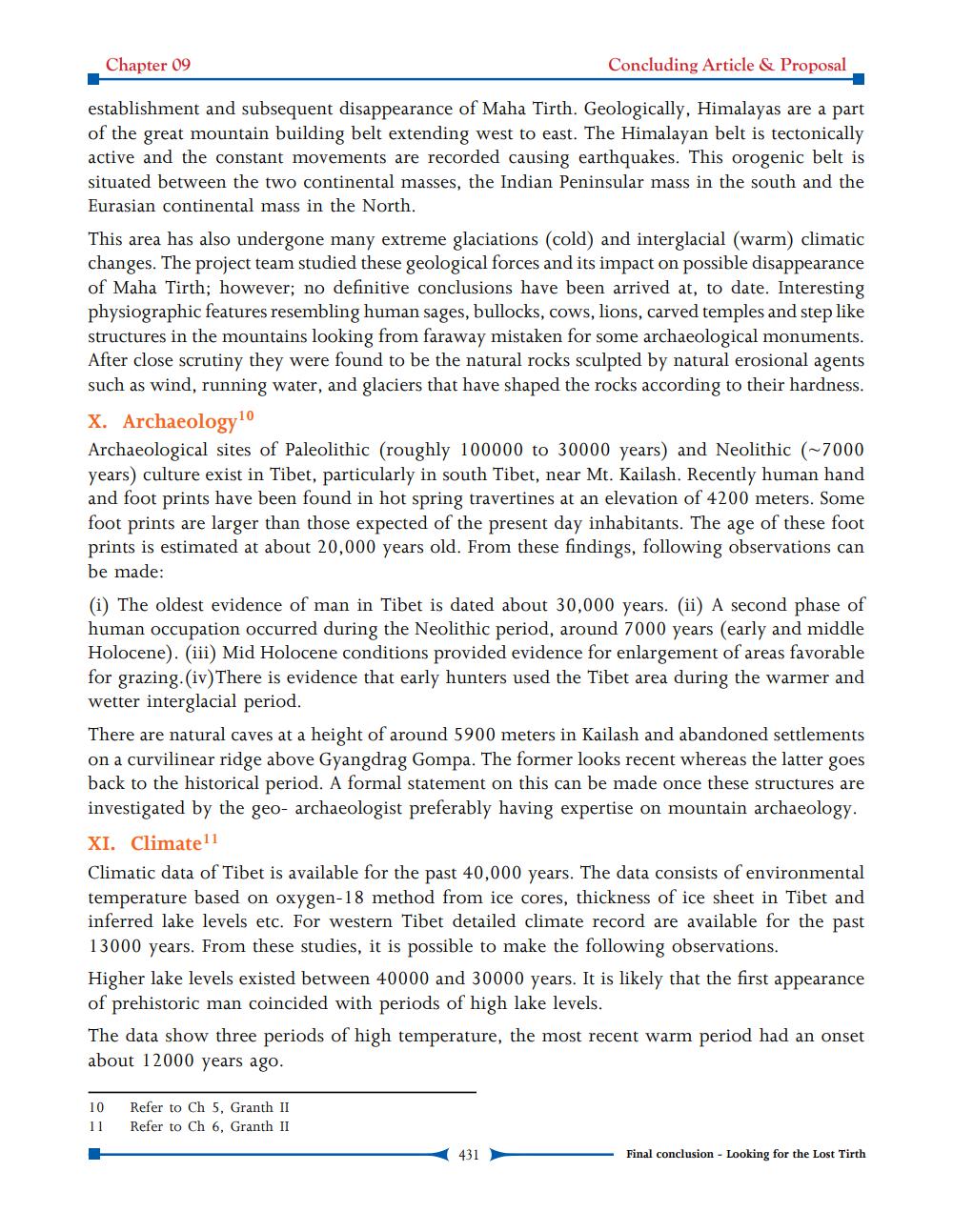________________
Chapter 09
Concluding Article & Proposal
establishment and subsequent disappearance of Maha Tirth. Geologically, Himalayas are a part of the great mountain building belt extending west to east. The Himalayan belt is tectonically active and the constant movements are recorded causing earthquakes. This orogenic belt is situated between the two continental masses, the Indian Peninsular mass in the south and the Eurasian continental mass in the North. This area has also undergone many extreme glaciations (cold) and interglacial (warm) climatic changes. The project team studied these geological forces and its impact on possible disappearance of Maha Tirth; however; no definitive conclusions have been arrived at, to date. Interesting physiographic features resembling human sages, bullocks, cows, lions, carved temples and step like structures in the mountains looking from faraway mistaken for some archaeological monuments. After close scrutiny they were found to be the natural rocks sculpted by natural erosional agents such as wind, running water, and glaciers that have shaped the rocks according to their hardness. X. Archaeology10 Archaeological sites of Paleolithic (roughly 100000 to 30000 years) and Neolithic (~7000 years) culture exist in Tibet, particularly in south Tibet, near Mt. Kailash. Recently human hand and foot prints have been found in hot spring travertines at an elevation of 4200 meters. Some foot prints are larger than those expected of the present day inhabitants. The age of these foot prints is estimated at about 20,000 years old. From these findings, following observations can be made: (i) The oldest evidence of man in Tibet is dated about 30,000 years. (ii) A second phase of human occupation occurred during the Neolithic period, around 7000 years (early and middle Holocene). (iii) Mid Holocene conditions provided evidence for enlargement of areas favorable for grazing (iv)There is evidence that early hunters used the Tibet area during the warmer and wetter interglacial period. There are natural caves at a height of around 5900 meters in Kailash and abandoned settlements on a curvilinear ridge above Gyangdrag Gompa. The former looks recent whereas the latter goes back to the historical period. A formal statement on this can be made once these structures are investigated by the geo- archaeologist preferably having expertise on mountain archaeology. XI. Climate 11 Climatic data of Tibet is available for the past 40,000 years. The data consists of environmental temperature based on oxygen-18 method from ice cores, thickness of ice sheet in Tibet and inferred lake levels etc. For western Tibet detailed climate record are available for the past 13000 years. From these studies, it is possible to make the following observations. Higher lake levels existed between 40000 and 30000 years. It is likely that the first appearance of prehistoric man coincided with periods of high lake levels. The data show three periods of high temperature, the most recent warm period had an onset about 12000 years ago.
10 11
Refer to Ch 5, Granth II Refer to Ch 6, Granth II
431
Final conclusion - Looking for the Lost Tirth




